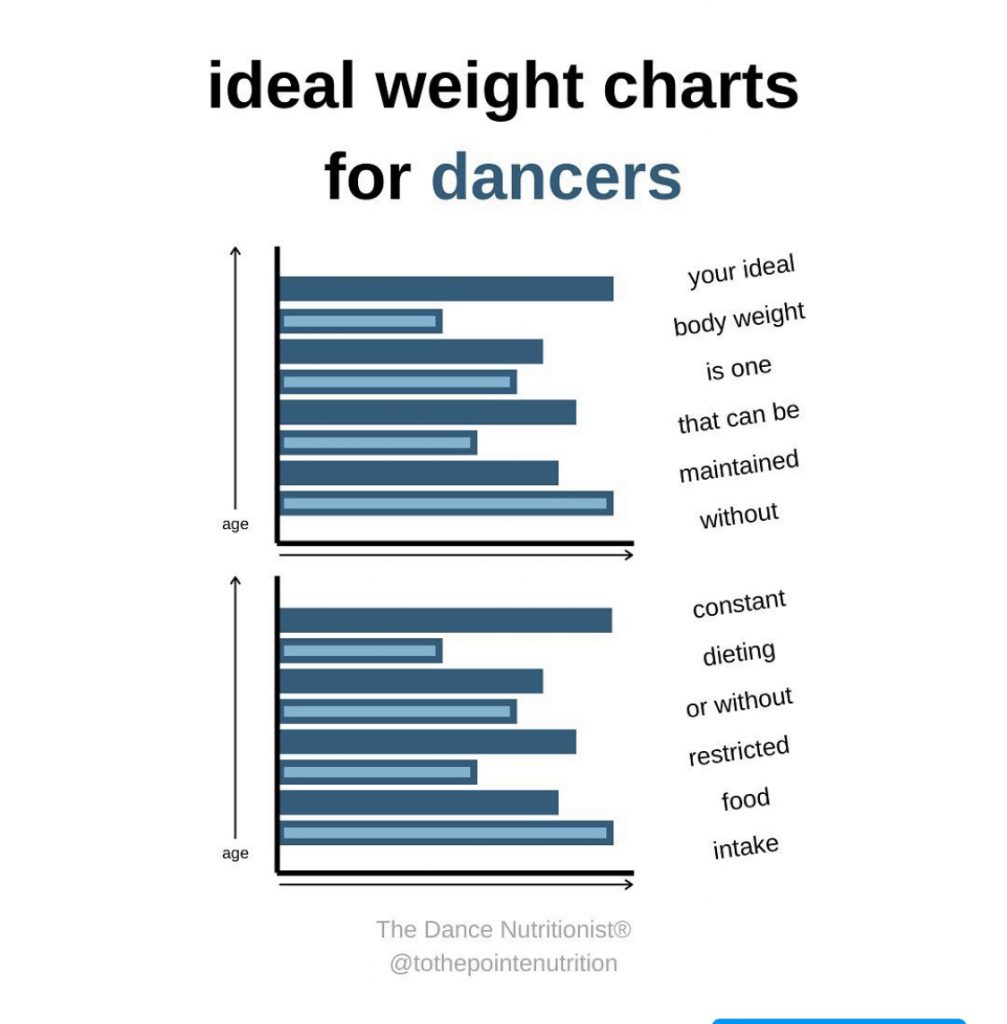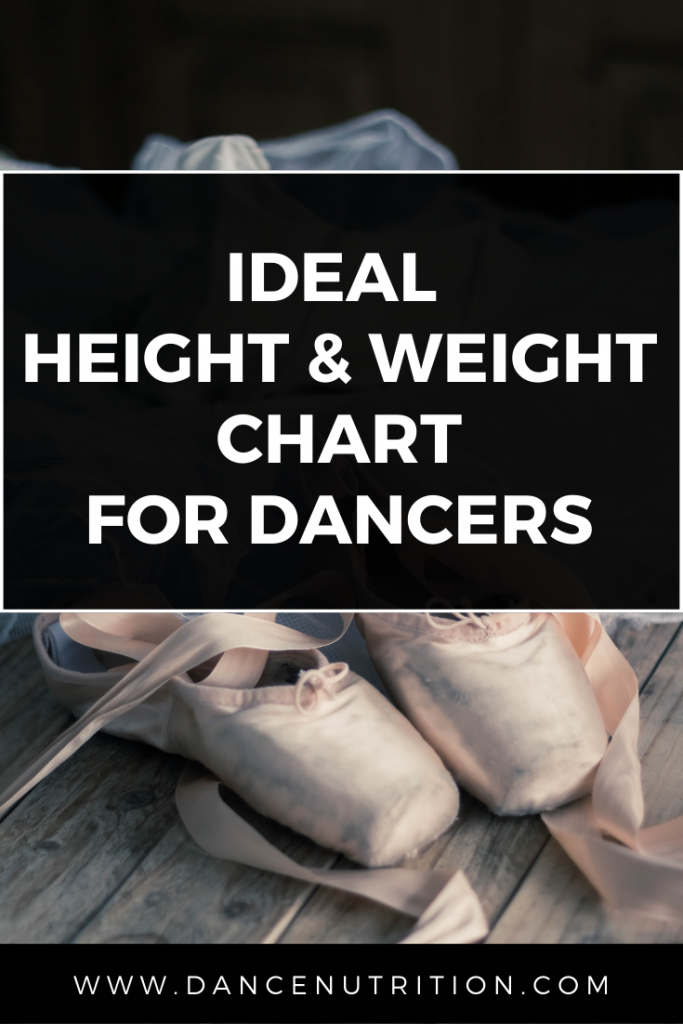What is an ideal weight chart for a dancer?
Some ballet schools rely on charting systems to assess the body weights of their dancers. These assessments are often used to determine performance potential. However, ideal height-and-weight charts are outdated, inaccurate, lack evidential data, and do not reflect a dancer’s capabilities on stage.
Ideal Height & Weight Chart for Professional and Aspiring Dancers

Is there an ideal body weight for a dancer?
In a previous article for Dance Magazine, I dispelled the confusion around “ideal body weights” and why such ideals cannot be used to assess health and performance potential. A dancer’s “ideal weight” is “…not the weight that requires restrictive meal plans, calorie counting, and obsessive exercise routines… [but rather] one that can be maintained without dieting. It fuels performance and makes room for all foods.” To learn more about what a “healthy” weight is, read this article.
The Risks of Ideal Weight Charts for Dancers
Using a charting system such as ideal weight charts to determine a dancer’s performance potential is extremely harmful. Dancers have a three times higher risk of suffering from an eating disorder when compared to the general population. Attempting to control one’s body weight leads to an uphill battle against biology. Additionally, weight loss methods and encouragement of one “ideal” feeds into a culture of systemic oppression and weight bias (a topic I talk more about here).
What About Partnering?
Partnering for dancers ultimately relies on your strength and ability to transfer weight symbiotically with your partner. Weight is only a fraction of the equation and not one that needs to be relied upon for comparison.
Audition Weight Requirements?
Red flag! A dancer’s ability to transcend an audience is WAY more informative than any number! This is especially true because, given the possible variations in body composition (as I mentioned earlier), body weight is incredibly variable. Studios and companies, if you want your dancers to flourish on stage, then read this article ASAP.
Set Point Weight
I’ve previously discussed how to define a healthy weight for dancers. Your set point is a weight range in which your body feels most comfortable. It’s nearly impossible to identify the exact weight at which your body feels most comfortable. This is especially true for anyone still growing into their adult bodies. It’s normal and healthy for weights to fluctuate and change. Attempting to control that number using restrictive eating and over-exercising is discouraged. While we cannot identify an exact number, we can consider classic signs to help determine whether you’re NOT at your set point weight:
- Are you struggling to recognize hunger cues during the day?
- Do you feel like you cycle between under-eating & “over” eating?
- Are you continuously skipping meals or snacks?
- Are you following “clean” eating plans?
- Is a body scale dictating how much you eat in a day?
- Has your period stopped or become very irregular?
- Do you overthink your meals so they fit into a regimented eating plan?
- Are you overexercising to “burn off” your food?
- Are you overexercising in preparation for a big meal?
- Are you struggling with emotional eating and eating to cope with emotions like stress & anxiety?
How do I get back to my set point?
When you’re at your set point, you:
- Am I now feeling and responding to hunger cues?
- On busy dance days, am I prioritizing a flexible meal plan with multiple snacks because I know my hunger cues might be diminished and unreliable?
- Do I feel like I’m no longer trying to micromanage my weight?
- Am I leaving most meals feeling comfortably full?
- Am I moving my body in a way that doesn’t feel excessive or compulsive?
To do this, follow these steps:
- Eating enough (you may need the help of a dietitian with this!)
- Eat regularly. Start with a flexible meal plan including at least 3 meals and 2-3 snacks daily.
- Abandon the scale. Yep! Scale weights are unreliable and do not reflect the entire picture of who you are as a human and dancer.
- Practice body attunement
- Challenge food rules and implicit weight bias.
How can I redefine the “ideal ballet body?”
The shift needs to happen on an individual, interpersonal, and systemic level. On the systemic level, encourage shifting in the industry when a safe opportunity presents itself— challenge ideals. Interpersonally, reassess your personal bias and explore diversity in your social feed (follow me for daily tips!). You can also increase your awareness of the harmful impact of diet culture and weight stigma (more on this here). And last, as an individual, consider reputable programs and board-certified professionals for support. To learn more about how you can redefine your ideal and become The Healthy Dancer®, check out these resources:
- The Healthy Dancer®
- What Is a Ballet Body?
- What Is A Healthy Body Weight?
- Body Positivity vs. Body Neutrality
- The Healthy Dancer® Virtual Summer Intensive



